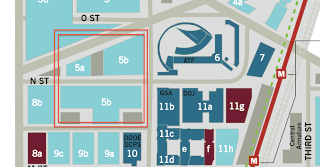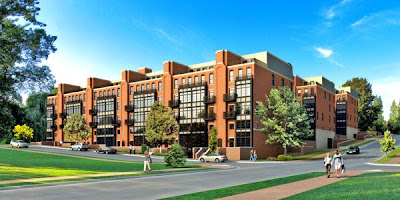 After years of tiptoeing towards growth, Shaw’s 9th Street plan is taking a big step in that direction in 2013, and one more real estate development is now officially in the pipeline.
After years of tiptoeing towards growth, Shaw’s 9th Street plan is taking a big step in that direction in 2013, and one more real estate development is now officially in the pipeline.  Adam Stifel, one of the founding principals of development company CAS Riegler, says the group, in partnership with Douglas Development and CityInterests, is close to construction on a residential project at the corner of 9th and N streets designed by PGN Architects. The partners say they hope to choose a general contractor by the end of October and plan to break ground early next year. "We’re all set and it’s pretty much entitled,” said Stifel, explaining that the project has received approvals from the local ANC, the DC Board of Zoning Adjustment, and the Historic Preservation Review Board. “Now we’re working on getting it priced out from general contractors.” Stifel would not name the four or five companies bidding on the construction project.
Adam Stifel, one of the founding principals of development company CAS Riegler, says the group, in partnership with Douglas Development and CityInterests, is close to construction on a residential project at the corner of 9th and N streets designed by PGN Architects. The partners say they hope to choose a general contractor by the end of October and plan to break ground early next year. "We’re all set and it’s pretty much entitled,” said Stifel, explaining that the project has received approvals from the local ANC, the DC Board of Zoning Adjustment, and the Historic Preservation Review Board. “Now we’re working on getting it priced out from general contractors.” Stifel would not name the four or five companies bidding on the construction project.The development site includes a lot at the corner of 9th and N streets that’s currently being used by garden center Old City Green, as well as an existing historic building at 1264 9th Street and a building located on Blagden Alley inside the block which formerly served as Fight Club DC, a privately-owned skateboarding/art/music space that closed in 2010. The corner lot is owned by Douglas Development, while CAS Riegler and CityInterests own the property around it.
Earlier estimates had placed groundbreaking in late 2012, but waiting until early 2013 to begin construction means that Frank Asher, owner of Old City Green, doesn’t have to vacate the property until after the lucrative Christmas tree season. Asher has spoken out more broadly about independently-owned businesses being forced to leave an area once it begins to develop.
The project's design has come a long way since its initial renderings, which featured a "Portland-esque" (as Stifel put it) aesthetic that was big on wood and steel. After multiple changes following meetings with retailers, neighborhood stakeholders and historic preservation officials, the design is now a little more conventional, giving a nod to the nearby row houses with its varying facade and incorporating--but not mimicking--the historic façade at 1264 9th Street. The building will back up to Blagden Alley, but Stifel says the connection along the alley will be too small to incorporate any alley amenity or streetscape.
 The development will include roughly 70 apartment units; most will be one-bedrooms, with some two-bedroom units scattered throughout and a few larger units located on the building’s penthouse level and its corners. The project will also include a level of underground parking and about 8,000 square feet of ground floor retail. "I think we'll end up with a restaurant taking most of it," said Stifel. "I think it's a really good corner space that's meant to be a restaurant or café."
The development will include roughly 70 apartment units; most will be one-bedrooms, with some two-bedroom units scattered throughout and a few larger units located on the building’s penthouse level and its corners. The project will also include a level of underground parking and about 8,000 square feet of ground floor retail. "I think we'll end up with a restaurant taking most of it," said Stifel. "I think it's a really good corner space that's meant to be a restaurant or café."Stifel, who himself lives in one of the company's Shaw buildings, says he thinks the area has a huge amount of promise. “Shaw has a lot to offer, and a lot of beautiful building stock,” he said. “As a guy who lives and breathes this stuff, I have a lot of confidence in this market.” He said that he envisions the development will have an urban feel similar to The Hudson, PN Hoffman’s boxy, high-ceilinged apartment building located across from the P Street Whole Foods in Logan Circle.
Washington, D.C., real estate development news





































